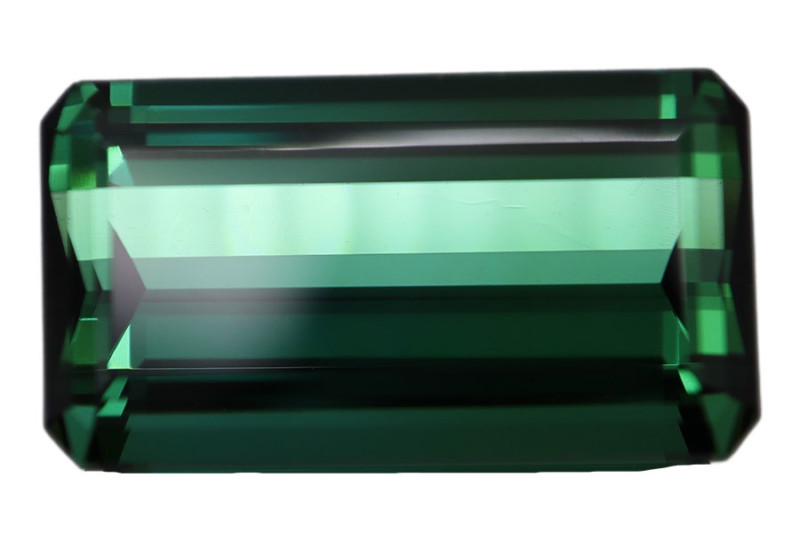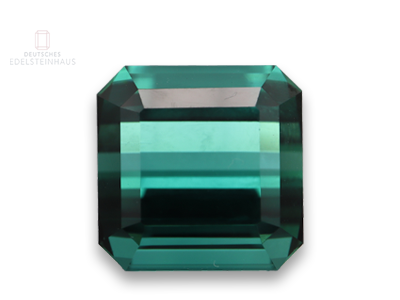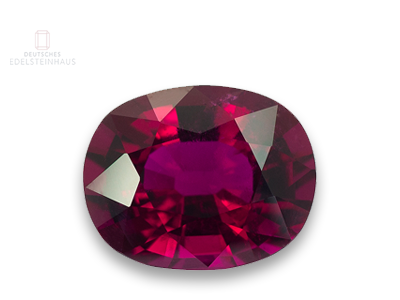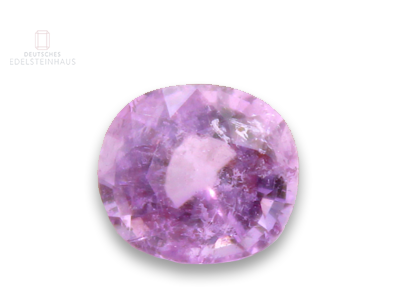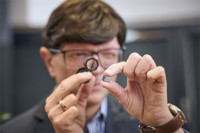Turmalin
Tourmalines belong to the most colorful gemstone family. Green tourmaline (verdelite), as well as pink colored tourmaline (rubellite) are varieties of the tourmaline family. They have different coloring elements. Iron and chromium make tourmaline green, manganese makes it pink. There are also rare blue tourmalines (indigolites).
Class: silicates (complex silicate)
Genesis: pegmatitic (magmatic, tourmalines form relatively late in “miarolitic”, partly hydrothermally influenced cavities of pegmatitic bodies)
Known varieties: rubellite, chrome tourmaline, verdelite, indigolite
Colours: red, yellow, green, green-blue, neon blue and neon green (Paraiba tourmaline when copper and manganese are color-causing).
Hardness: 7
Visual Effects: Cat Eye Effect
Most important deposits: Brazil, Congo, Rwanda, Tanzania, USA
Tourmalines often show strong color zoning. Homogeneously colored ones with little color change in different viewing directions are very rare and sought after.
In the jewelery sector there are so-called “watermelon tourmalines”, which show a different color structure from the inside to the outside. This material is often used as discs in earrings and the like. used. Tourmaline was used by seafarers in the past as a pipe cleaner. To do this, certain tourmalines were used and heated, which gave them a surface charge. This charge is similar to rubbing balloons on a sweater and making your hair stand on end. With this property, tourmalines were held into seafarers’ whistles to draw out the ashes. A historical term for some black and dark green tourmalines is therefore “Aschentrekker”.
Tourmaline is one of the minerals with the most interesting inclusions. Since gem quality tourmalines have very few inclusions, these are the ones to look for. But when the inclusions are more frequent and well-defined, the dynamics of nature show themselves very nicely in them. Liquid inclusions that look like pulled apart cloths give an idea of the interaction between solid and liquid during the crystallization process.
Our customers are enthusiastic:
Warum Sie sich für ein Edelsteininvestment vom DEH entscheiden sollten:
Get advice now & invest safely across generations!
Whether via our contact form, by phone or email – our competent colleagues will be happy to help you:

10 points you should consider when investing in gemstones!
In this video, you will learn the crucial aspects to consider if you are planning to invest in colored gemstones.
Error: No feed with the ID 1 found.
Please go to the Instagram Feed settings page to create a feed.
Problem bei der Anzeige von Facebook-Beiträgen. Backup-Cache wird verwendet.
Klicken, um Fehler anzuzeigen
Youtube
Error 400: API key not valid. Please pass a valid API key..
Domain code: global
Reason code: badRequest
Error: No feed found with the ID 1.
Go to the All Feeds page and select an ID from an existing feed.
Deutsches Edelsteinhaus DEH GmbH
Kogenwiese 5
88279 Amtzell
Deutschland
Wichtige Links:
mehr lesen
Bundesanleihen
Investment Farbedelsteine – Substanzwerte im Vergleich
Investment Farbedelsteine – Krisensichere Geldanlage
Investment Farbedelsteine – Die Alternative zum Tagesgeld
Investment Farbedelsteine – Die Alternative bei Sachwerten
Investment Farbedelsteine und Rubine kaufen
Investment Farbedelsteine – Die Alternative zur Umlaufrendite
Investment Farbedelsteine und Scalable Capital Vermögensverwaltung
Vor- und Nachteile von Goldinvestitionen
Investment Farbedelsteine kaufen
© COPYRIGHT 2025 Deutsches Edelsteinhaus DEH GmbH | Impressum | Datenschutz | AGB | Privatsphäre Einstellungen


